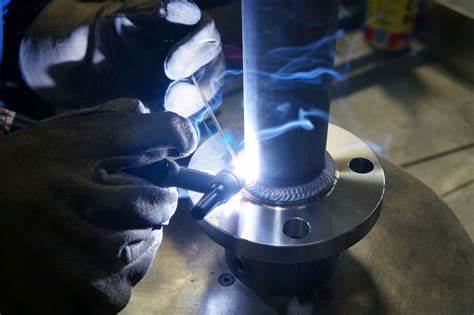IG welding, while commonly associated with thin metals, offers a wide range of applications suitable for both hobbyists and professionals. AC/DC welders, in particular, provide versatility and are essential tools for various tasks in home projects and automotive repairs, making them indispensable for DIY enthusiasts.
What is an AC/DC welder and why should I use one?
Welding Town
What metals can I weld with an AC/DC TIG welder?
An AC/DC TIG welder is a versatile tool that enables the creation of high-quality welds across a wide range of materials. Some of the materials commonly welded using an AC/DC TIG welder include:
- Aluminum: TIG welding with alternating current (AC) is particularly suitable for welding aluminum. The AC waveform helps to clean the oxide layer on the aluminum surface, facilitating better fusion and producing strong and aesthetically pleasing welds.
- Stainless Steel: AC/DC TIG welding is commonly used for welding stainless steel, offering precise control and excellent weld bead appearance. The ability to adjust the balance between alternating current and direct current (DC) allows for optimal control of penetration and heat input, resulting in clean and durable stainless steel welds.
- Carbon Steel: AC/DC TIG welders can effectively weld carbon steel, providing the necessary control over heat input and penetration depth. Whether it’s structural steel or general-purpose carbon steel, an AC/DC TIG welder allows for precise welding and produces high-quality welds.
- Copper: TIG welding with an AC/DC welder enables the welding of copper, a highly conductive metal. The balance between AC and DC helps control heat input and penetration, allowing for precise and strong copper welds.
- Titanium: AC/DC TIG welding is commonly used for welding titanium, which requires precise control of heat input to prevent overheating and potential material damage. The versatility of AC/DC TIG welders allows for fine-tuning the welding parameters to achieve optimal results when working with titanium.
- Nickel Alloy: AC/DC TIG welding is suitable for welding various nickel alloys, such as Inconel and Monel. The ability to adjust the AC/DC balance and control heat input ensures proper fusion and produces high-quality welds in nickel alloys.
These are just a few examples of the materials that can be effectively welded using an AC/DC TIG welder. The flexibility and control provided by an AC/DC TIG welder make it a valuable tool for achieving precise and high-quality welds across a wide range of metals and alloys.
Being able to choose between alternating and direct current gives you convenience and flexibility in one machine. Alternating currents achieve greater penetration and is a good choice for thinner, more delicate pieces. A direct current creates an intense arc that is capable of melting harder metals like steel and titanium.
TIG is one of the most versatile and high-quality welding processes and being able to master it opens up a whole world of potential.




![12 Different Types of Welding Processes [The Definitive Guide] 6 12 Different Types of Welding Processes [The Definitive Guide]](https://www.021208.com/wp-content/uploads/2025/01/12-Different-Types-of-Welding-Processes-The-Definitive-Guide-150x150.jpg)







